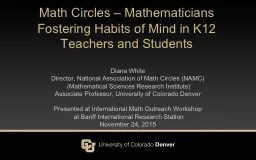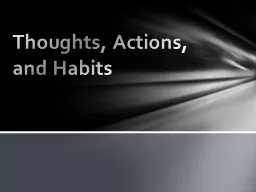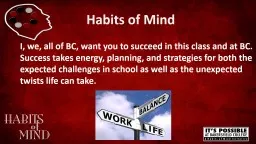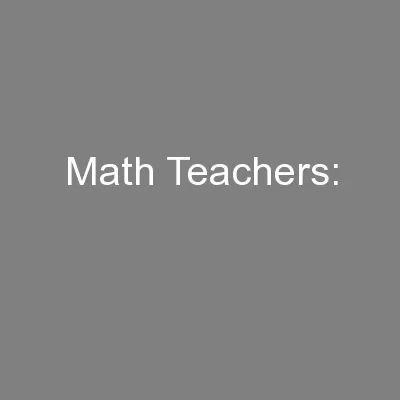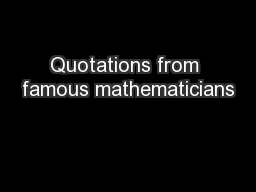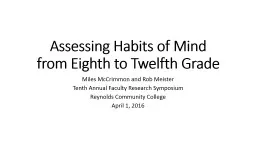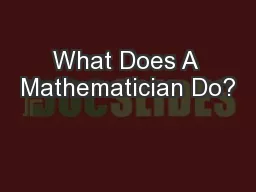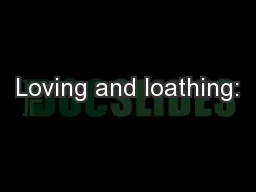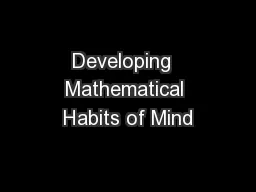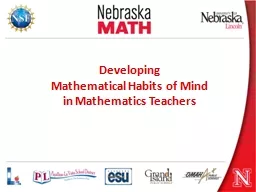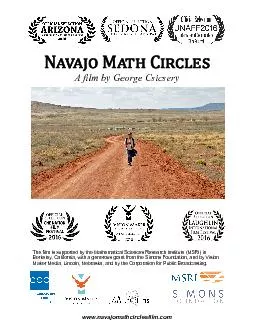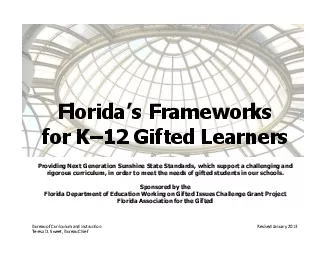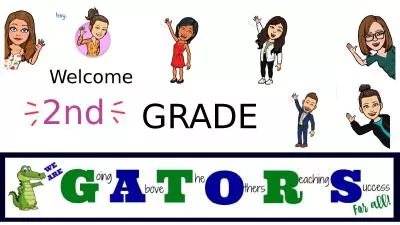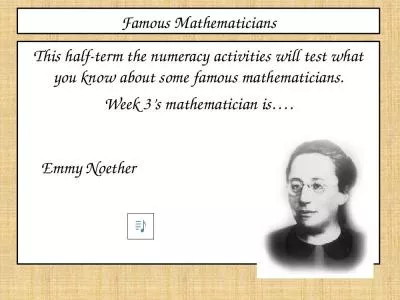PPT-Math Circles – Mathematicians Fostering Habits of Mind in K12 Teachers and Students
Author : LuckyLadybug | Published Date : 2022-08-01
Diana White Director National Association of Math Circles NAMC Mathematical Sciences Research Institute Associate Professor University of Colorado Denver Presented
Presentation Embed Code
Download Presentation
Download Presentation The PPT/PDF document "Math Circles – Mathematicians Fosterin..." is the property of its rightful owner. Permission is granted to download and print the materials on this website for personal, non-commercial use only, and to display it on your personal computer provided you do not modify the materials and that you retain all copyright notices contained in the materials. By downloading content from our website, you accept the terms of this agreement.
Math Circles – Mathematicians Fostering Habits of Mind in K12 Teachers and Students: Transcript
Download Rules Of Document
"Math Circles – Mathematicians Fostering Habits of Mind in K12 Teachers and Students"The content belongs to its owner. You may download and print it for personal use, without modification, and keep all copyright notices. By downloading, you agree to these terms.
Related Documents

